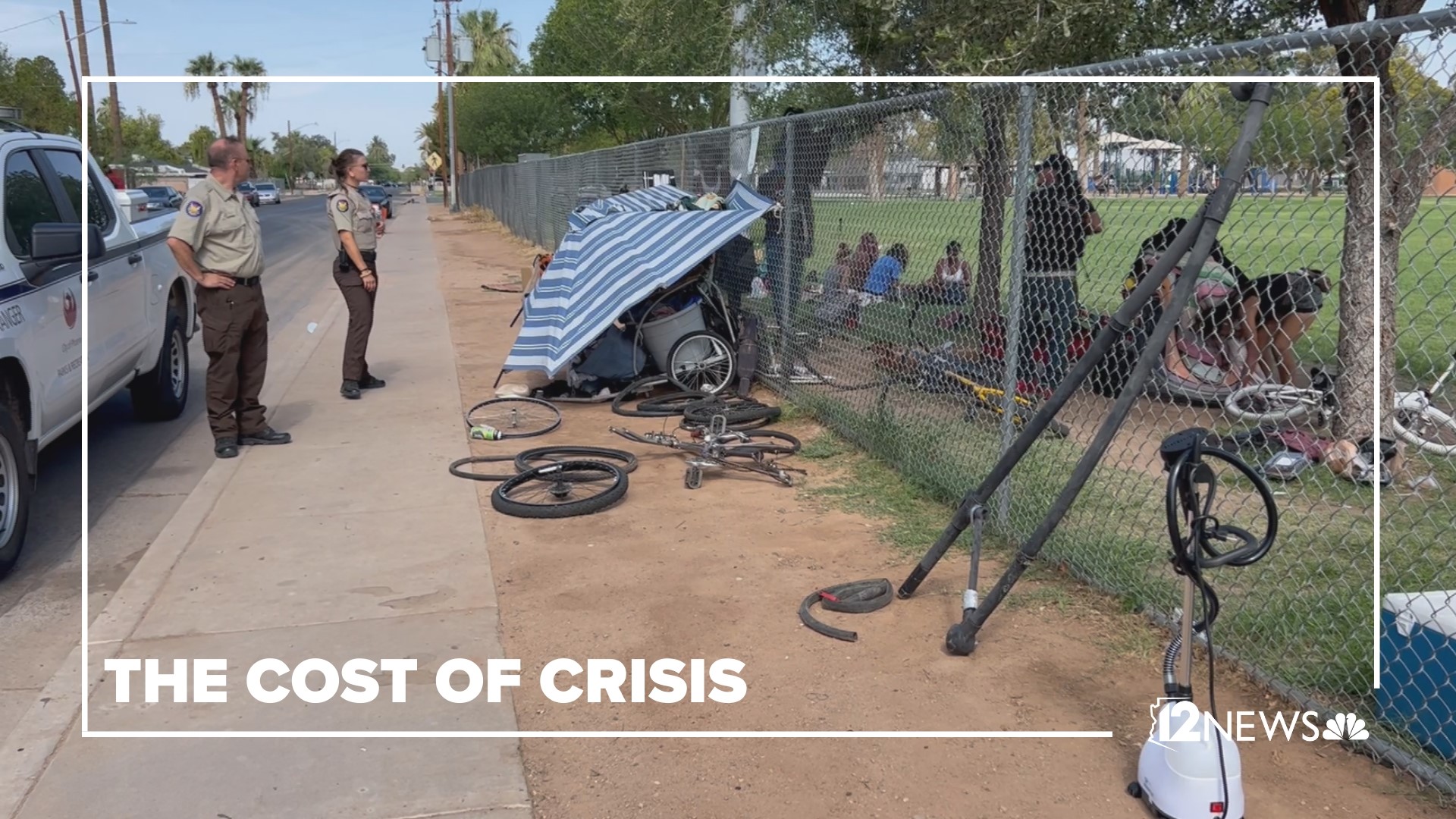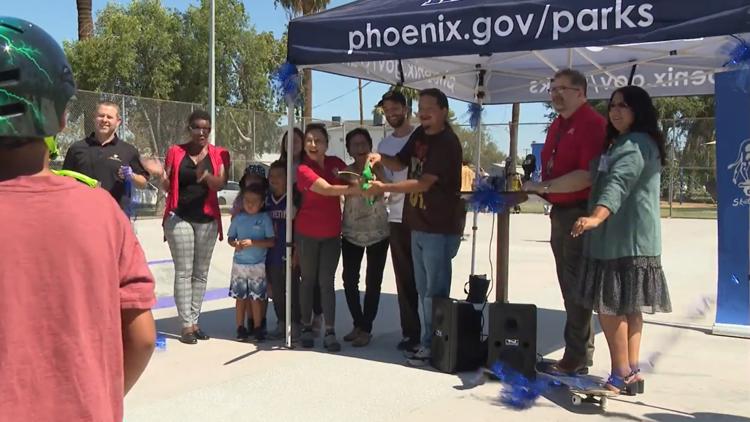‘Building housing isn't a quick process’: Phoenix weighs in on millions in COVID relief money for homelessness that hasn’t been spent
The city doesn't have enough shelter space to meet the needs of a growing unsheltered population.

A tarp propped up by shopping carts provides some respite from the triple-digit temperatures. It's a haven of sorts in a hell Lorraine never imagined.
“It’s scary,” Lorraine shared. “By myself out here I don’t sleep. I always have to be watching my back. During the day I get my rest. I always feel safer during the day sleeping.”
Lorraine said she’d been experiencing homelessness for about a year.
We met her at Perry Park, near 32nd Street and Thomas Road, where she was cleaning her space; duties she takes seriously, even though she’s living on the streets.
>> Download the 12News app for the latest local breaking news straight to your phone.
“I was just cleaning here,” said Lorraine that morning. “Making sure we don’t have any garbage in here because we get ants.”
It’s a reality for many who regularly line the fence at Perry Park.
“We’re like family,” said Lorraine’s friend Robert J. “Brothers and sisters.”
He and Lorraine were sharing a tarp space. Unlike Lorraine, Robert J. told 12News he’d been experiencing homelessness on and off for years.
“There are days that I wake up out here and I wake up just sad,” he said. “I look at myself. What am I going to do? Am I going to be out here when I’m 60 or 70 years old?”
At the time, Robert J. told us he was 46.
“I don’t want to be out here when I’m 50,” he added.


Chapter 1 The Cost of Crisis
When you talk with Lorraine and Robert, you can understand how costly the housing and homelessness crisis can be. You can see it in encampment conditions; in neighborhood impact; in city resources; in human suffering.
“I talk to so many kids out here,” Robert J. told us. “They ask me. ‘How long you been out here?’ I’ve been out here a long time. You see these gray hairs? I didn’t get these gray hairs for no reason.”
Robert J. said he’s struggling on the streets and would be interested in help.
“The only place this is going to get me into is into the graveyard,” he said.
But services aren’t always felt by those who need them.
“We're very crystal clear on the need,” said Scott Hall, with the City of Phoenix’s Homeless Services Division. “The need is great.”
Funding vs. spending: A look into the city's budget
The cost to fix the needs is not so clear.
The City of Phoenix’s budget for homelessness services and affordable housing changes every year – with funding funneling from several different sources, including local taxpayers, grants and federal dollars.
But spending isn’t always felt by people who need help.
This year, the City of Phoenix presented a $49.9 million plan for homeless services and affordable housing in fiscal year 2022-2023. Most of the City’s budget is reportedly designated for shelters and contracts for services like mental health care and outreach.
One of the City’s biggest funding sources is the federal government, which has given Phoenix $99.5 million in American Rescue Plan Act COVID relief to address homelessness and affordable housing since 2021.
But it turns out, the city hasn’t spent most of that money.
Many of the projects weren’t approved until June of this year.
Even so, the city has only spent about $8.6 million, less than 10% of these federal funds.
And the money has an expiration date. It must be used by 2024.
“There’s no beds,” Robert J. said. “You wonder. All this money they try getting for us. Where’s this? They want us off the streets but there’s no beds.”
12News asked the city why a majority of the ARPA funding hadn’t been used and received an emailed response from a spokesperson:
The city has access to all ARPA funding and is working diligently to approve contracts and spend the allocation as effectively as possible.
“So, it's not as easy as you have a flat number and that's what you have to solve for,” Hall explained. “Because you have an outflow number of people, you're able to place and get housing and treatment and shelters, connected with family. But you also have an inflow number.”
In short, more and more people are becoming unsheltered and despite the millions of dollars budgeted to help, the city can’t keep up.
From 2016 to 2022, the total number of chronically homeless individuals has increased by 73%, according to the Maricopa Association of Government 2022 Point-in-Time homeless count.
The survey, taken in January 2022, showed 9,026 people experiencing homelessness in Maricopa County at the start of the year, which is up by more than 2,400 people since before the pandemic. Of that number, more than half were reported to be unsheltered, as opposed to staying in a shelter space.
Residents speak out: 'It’s not the same park from when I moved here'
In Robert J.’s case, he said he’d been staying on the streets on and off since he was a teen. He spoke about his own hardships that led him to the streets.
“I’m an alcoholic,” he shared. “I’m an addict. I’m not scared to admit that.”
Robert said there were times when it felt like he would die at Perry Park, sharing that he’d witnessed violence on multiple occasions.

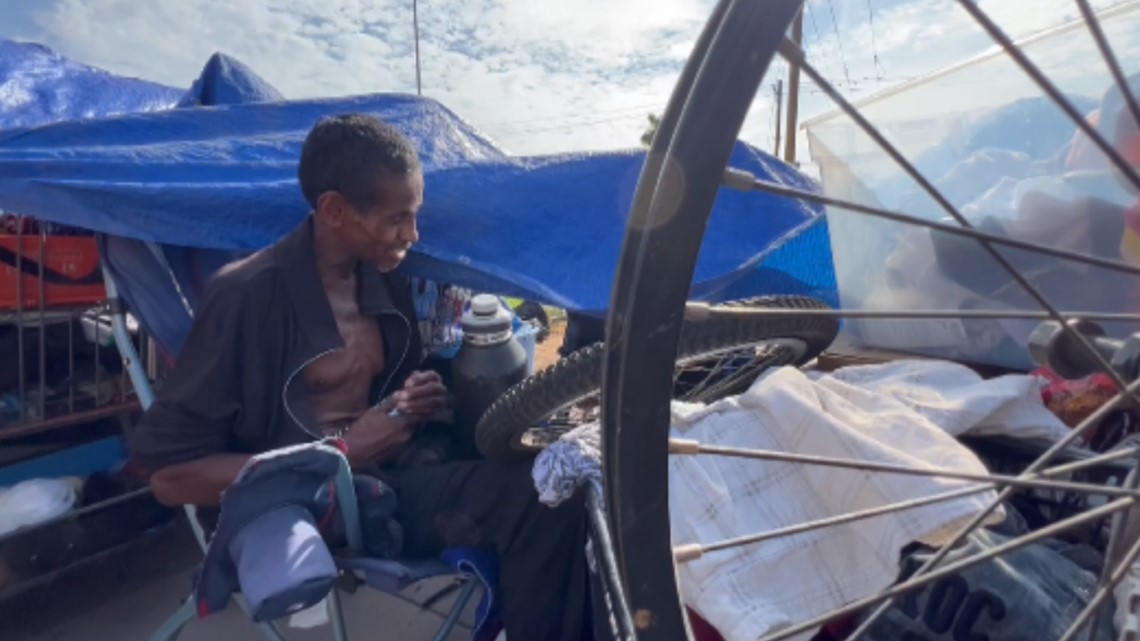
In the past year, crime mapping shows cases of illegal drug use, shootings, assaults, and vandalism - safety concerns that impact the whole neighborhood.
“I’ve seen the fights,” said Morgan Sailor, who lives down the road from Perry Park. “I’ve heard the fights. My family has had to shelter in the back of our house.”
She started noticing bigger changes in her neighborhood during the pandemic.
“We’ve seen people having sex up against the side of the building here,” she said, pointing to a chain store across the street from the park. “People passed out, people just sitting out here smoking meth, or whatever they’re smoking.”
She said she used to take her child to the park to play, but is reluctant to do so now.
“It’s not the same park from when I moved here.”
When she walks by now, she feels helpless.
“You’ve got people that are mentally ill, people that are on drugs,” she stated. “I can’t fix that. I’m not qualified to. I don’t want to bring my child here to play.”
Her frustrations aren’t without compassion. She’s noticed a constant cycle of people who need help lining the park fence over the past few years.
“I don’t want to give the impression that I’m frustrated with the people here,” Sailor explained. “I’m frustrated with the city failing us.”
Of the more than 9,000 people tallied experiencing homelessness in Maricopa County, more than 5,000 can’t even get into a shelter, according to the Point-in-Time count. The majority of those unsheltered, nearly 3,100 people, are concentrated in central Phoenix.
City officials see the problem: 'We know we’re failing people'
In Phoenix, shelters are often full, including a new 200-bed space a few miles from Perry Park.
“We're seeing the whole gamut from addiction to mental health issues, to fixed incomes, people being priced out of the rental markets or housing market,” Scott Hall said.
Hall is one of many people across several city departments involved in addressing the homeless crisis.
“We're seeing everything exacerbate the homeless issue within our city and within the country,” he said.
He said he’s been out to Perry Park multiple times himself, trying to connect people in need to city resources, even if beds aren’t always an option.
“At the end of the day, we know we're failing people,” Hall shared. “If anybody is on that street, that's a failure. Right? But this is an epidemic across the country - increased homelessness. And we're continuing to try to put housing projects in place and shelter projects in place so no one has to be unsheltered in our community.”
Chapter 2 Calls for change
Soon after Robert J. and Lorraine moved the tarp on top of their shopping carts to keep out the sun, City park rangers drove by their set-up at Perry Park.
They said that the park rangers told them they had to move off of park property. It’s a scenario they’d been in before and they already knew the drill.
Almost immediately, Lorraine started pushing the carts feet away, across the street, which kept them technically off park property, but no less unsheltered.


“At the end of the day I’m angry at the city government because I feel like they’re failing the residents here and they’re failing the people in the park,” Morgan Sailor told 12News.
Whenever Sailor has seen people moved from the park by the city, she said it doesn’t stick.
“It gets cleaned up and within a day, two days - I’m sure when you see it next week it could be completely different and filled up again,” she said. “I see an unsanctioned homeless camp that the City is seeing as the solution until they somehow find permanent housing for every single person here.”
Since the end of May 2022, 12News has visited Perry Park more than a dozen times.
Signs at Perry Park, a public city park, detail what’s not permitted on the property.

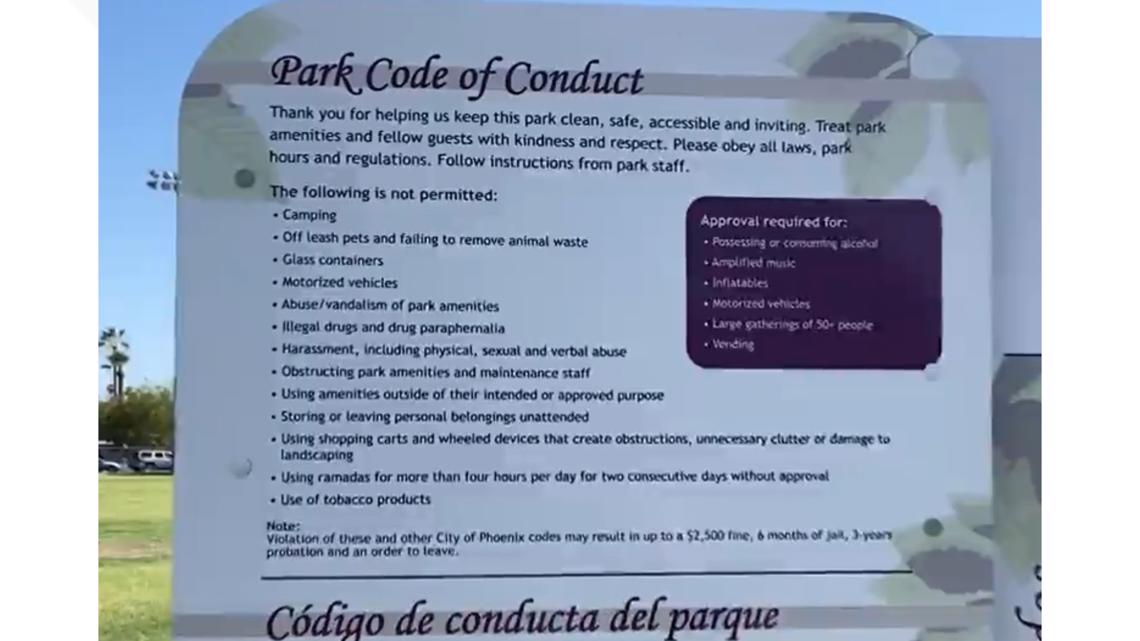
A long list includes no camping, no illegal drugs, no physical abuse, and no using shopping carts.
Still, our cameras and staff witnessed some of those things week after week.
“And you're just like, wow, something needs to happen for this neighborhood,” said Chelsea Friday. “Because we have people who are out here suffering and they have no place to go.”
Chelsea Friday, along with Sailor, are active in their neighborhood association and have repeatedly raised concerns regarding Perry Park with multiple city departments, according to anecdotal accounts, emails and phone records.
The 12News I-Team pulled city data from 2019 through July 2022 and found that calls for Phoenix fire to the block of Perry Park nearly doubled in the past two years. Data shows there were 17 calls in 2019; 15 calls in 2020; 28 calls in 2021 and 24 calls for the first half of 2022.
The types of calls reported raise alarm, including injuries, overdoses, stabbings, even a dumpster fire in July.
Phoenix police data showed a different trend. City data shows there were 70 calls in 2019; 100 calls in 2020; 65 calls in 2021 and 67 through July 2022.
Editor's note: Acquired data only accounts for the first half of 2022.
The calls drop after 2020, but still average more than one call per week. Several of the calls in the past year have been for a suspicious person or suspicious activity.
City Councilman Carlos Garcia tours Perry Park with 12News

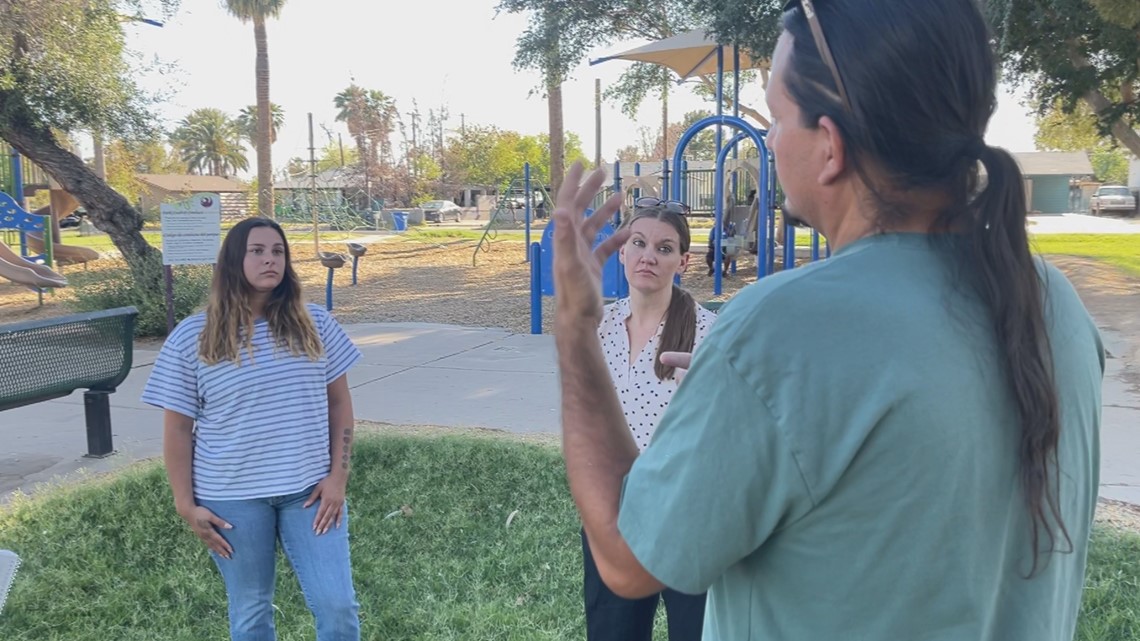
In mid-June, Phoenix City Council member Carlos Garcia toured Perry Park with 12News, which is part of his district.
“Today, I actually see a bunch of kids in the pool, which is really exciting to see,” he started off. “But you obviously still see a lot of people who are staying in the park, who may not have a place to live or maybe doing other things.”
On that day, the park saw a range of visitors including families at the pool, people using the playground, people camping out and people using what appeared to be illegal drugs. The bathrooms were closed, with a sign indicating the restrooms would be locked due to vandalism.
“Because of the situation, we can't even have the bathrooms open,” Garcia noted. ”And so I'd love to see not only Perry Park, but every park in the City of Phoenix being used to its max potential.”
Despite numerous calls to police, the city legally can’t arrest someone for being homeless.
That stems from a 2018 U.S. 9th Circuit Court of Appeals ruling in Martin v. Boise, which found criminalizing sleeping in public to be an Eighth Amendment violation. Under the ruling, municipalities can’t arrest someone for being homeless or sleeping in public if the city doesn’t have enough shelter beds for people in need.
“If everybody has to put their hand up and say, ‘I want a shelter bed right now?’ The answer is no,” Hall, with Phoenix’s Homeless Services Division, explained.
In Phoenix, the number of people considered to be unsheltered outnumbers the number of shelter beds. And when people resort to parks?
“It feels like the City isn't trying to even find real sustainable solutions,” Sailor shared.

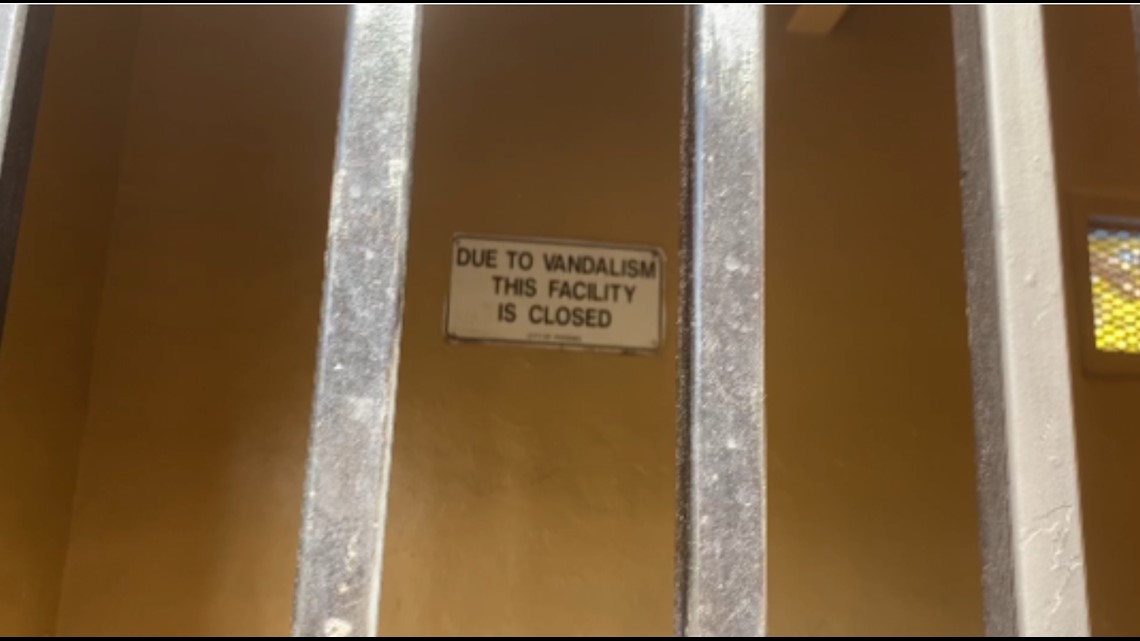
Chapter 3 PHX C.A.R.E.S.
Calls concerning Perry Park have skyrocketed
If there’s a concern involving homelessness or an encampment, people in Phoenix are encouraged to report to PHX C.A.R.E.S., a program that uses a variety of city services to provide help, education or encampment clean-up.
Since 2019, the 12News I-Team found that the number of calls to PHX C.A.R.E.S. has skyrocketed.
The city’s records tallied 21,572 cases from 2019 to June 2022.
City data shows there were 4,237 calls in 2019; 4,631 calls in 2020; 6,707 calls in 2021; and 5,997 calls through mid-June 2022, on track to surpass the years before it.
The majority of calls are listed as “Public Encampments.” Others are listed as “Private Encampments,” “Individual/Other,” or left blank. All calls from 2019 through mid-June 2022 are listed as resolved by the city.
Parks and other public city properties are among the top locations with the highest volume of PHX C.A.R.E.S. calls.
“We are there seven days a week monitoring, inspecting, cleaning our parks every day,” said Danielle Poveromo, a Deputy Director with the Parks and Recreation Department. “So we address those situations as they come up. And as we see them.”
- Burton Barr Library - 270 calls since 2019
- 12th Ave and Madison (intersection at Human Services Campus) - 167 calls since 2019
- University Park - 148 calls since 2019
- Perry Park - 121 calls since 2019
- Phoenix City Hall - 120 reports since 2019
And like neighbors told us, the reports at Perry Park significantly increased during and after the pandemic.
Editor's note: Calls to the top 15 highest density C.A.R.E.S. call locations were graphed over the last four years.
“There are many, many different departments involved and they just point fingers at each other,” Sailor said. “And as a busy resident, I have a full-time job, I'm a mom, Chelsea has four children. We could be on this merry-go-round for the rest of our lives.”
Sailor, who shared her phone records with 12News, called PHX C.A.R.E.S. for help three times in 2021, plus other calls to other city departments, including parks and police. Even though all the PHX C.A.R.E.S. calls through June 2022 are listed as resolved, Sailor’s point is that there is always another concern popping up.
“It's heartbreaking and exhausting,” Sailor shared. “We’re trapped in this bureaucratic cycle, we can't get out of it.”
City holds 'activation events' to encourage park use
Garcia’s office and other City departments, like parks and recreation, have tried to show they aren’t ignoring Perry Park.
Parks crews are regularly out cleaning debris on the grounds and working on landscaping.
There’s programming like soccer, but it’s seasonal.
In early July, the city opened up a skate park on an old tennis court that kids and adults have continued using.
And at the end of July, there was Water Day, where the city put up inflatable water slides.
Councilmember Garcia also showed us a mural on the back of the bathroom building at Perry Park, depicting a group of smiling children. Garcia told 12News that families and park neighbors were encouraged to come and see the mural.
“The children from the neighborhood were able to add to it,” Garcia shared.
All these events are considered “activation” events, where neighbors are encouraged to come use the park.
“I think it is on all of us,” Garcia explained. “I think it's important for neighbors to activate the park. I think when there's an empty public space, and it's the only place where unsheltered people can be, they're gonna go there.
Both Chelsea and Morgan said they’ve brought their families to some of these activation events, but don’t see a lot sticking after the events are over.
“And we're looked at as the ones to resolve this issue,” Friday shared. “But when it comes to actually having the discussions and conversations, we never get a seat at the table. And that's been the biggest thing is the pushback. And nobody is seeming to collaborate together to get real solutions implemented.”
Both Sailor and Friday came with 12News on the tour with Councilmember Garcia. He was able to respond to their questions. And he didn’t try to hide what’s happening in plain sight.
“The biggest crisis we have in Phoenix right now is the housing situation,” he said.
The city budgets for creating shelter space and affordable housing.
“There's no easy solution,” Garcia said. “I can't look at the neighbors and tell them, ‘We're going to fix it by tomorrow.’ And I also can't guarantee that's going to be fixed for a year. Because the problems that we ended up seeing here are societal problems that are impacting everyone.”
Perry Park 'activation events'
Making shelter space
The state’s largest shelter, Central Arizona Shelter Services, or CASS, is right in the heart of downtown Phoenix on the Human Services Campus, a hub for people experiencing homelessness.
CASS added more beds in June, bringing the total to 600, which are typically all full. The shelter said it’s in the process of adding even more space in 2023. A spokesperson told 12News that one space will be a shelter for seniors and will hold up to 170 individuals; the other will be a 50-bed shelter in partnership with COPA Health designated specifically for people who have serious mental illness and are experiencing homelessness.
As of the last week in August, the shelter estimates more than 800 people are living on the streets outside the shelter, an area that’s come to be known as the Zone, Phoenix’s largest homeless encampment.
In early August, residents and property owners sued the city over conditions in the zone.
“We're one of the fastest-growing cities and that's a good thing,” Hall explained. “But there's consequences that come with that. The housing market gets short. Right now inflation is high. So ultimately homelessness ends with someone being housed. And when that endpoint gets jammed up like it is now, it makes it difficult to create capacity within the existing projects you're doing.”
12News met with Scott Hall in a new shelter space near 28th and Washington streets, intended for people in the eastern side of the city. It has 200 beds and there’s even space for pets, but the shelter is perpetually full.
“Building housing isn't a quick process,” Hall explained. “And it's an expensive process. So when you hear these large amounts of money, sometimes it gets consumed up pretty quickly of building shelter projects and housing projects.”
And some of this is only temporary.
The 28th and Washington streets shelter, which the city opened as a joint project with Maricopa County, is only in the budget through December 2024.
“But that doesn't mean 200 beds are just gonna go away like that,” Hall said. “We'll evaluate and see how we can fund it and look for other funding sources.”
In the meantime, Scott said the city is trying to online new shelter options and continue assistance programs. He said the city is looking at other properties and is in the process of starting a pilot for tiny homes to see if those would work in Phoenix.
Long term projects when people need help now. We asked Scott Hall when Phoenix might be at a point where there will be affordable housing for everyone.
“I can't answer that question,” Hall said. “I hope soon.”
Here's how you can help
Click here to contact PHX C.A.R.E.S. or call at 602-262-6251.
Click here to learn how you can help CASS.
Click here to get involved with Summer of a Million Meals.
Click here to contact your Phoenix City Councilmember.
For tips on this or any other story, contact the 12 News team at connect@12news.com
If you or someone you know is struggling with housing costs, there are resources available to help.
The City of Phoenix offers Emergency Rental Assistance for some families who experienced financial hardship due to the COVID-19 pandemic. The funds can help pay utility bills or help pay to avoid eviction.
The Arizona Department of Housing also offers mortgage assistance to prevent foreclosure for homeowners who faced financial hardship due to the pandemic.
The Arizona Foundation for Women offers outreach support to help put people in contact with the services and shelters they need.
I-Team Investigates
Award-winning journalism and fact-checking from the 12 News investigation team.


